There’s really no set formula to run 50 miles. Training, nutrition, and a bit of luck are all important, but if I could only tell you one thing, it’s simply “mind over matter.” Put your head down, place one leg in front of the other, and pretend everything doesn’t hurt. (Then repeat until you get to the end.)
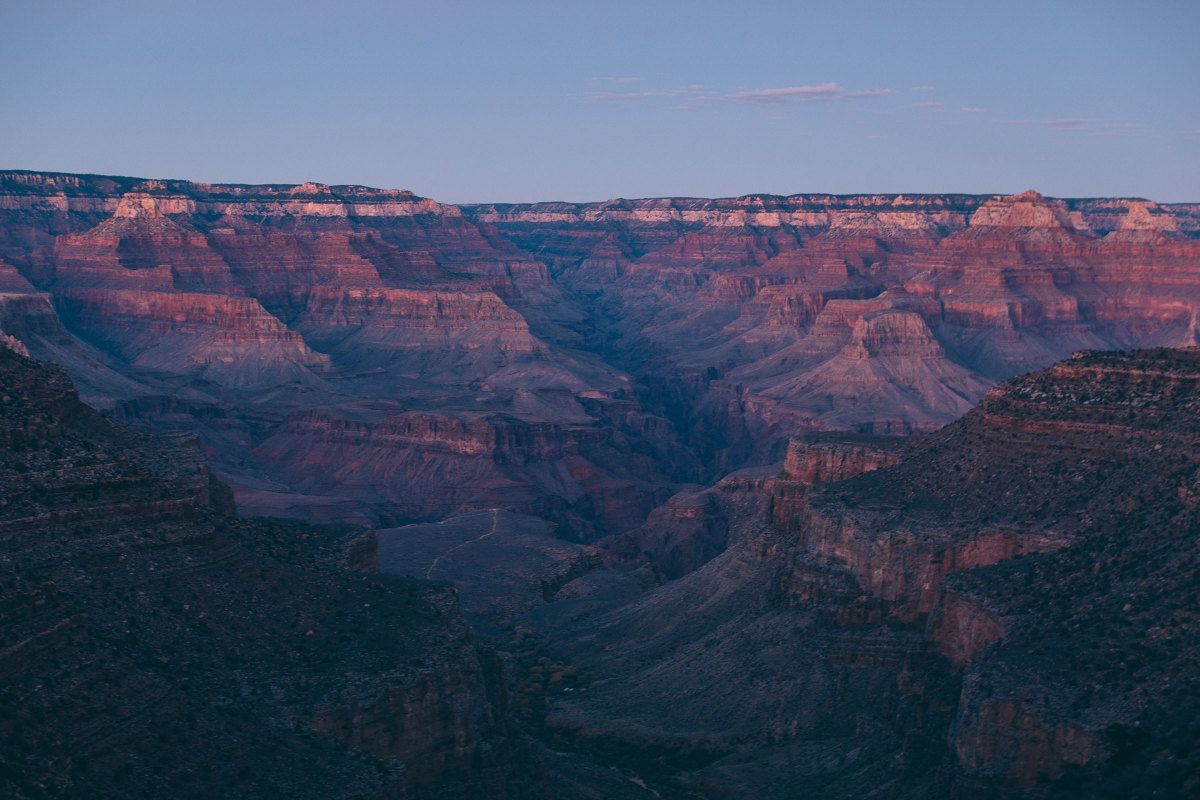
Four good friends and I once ran across the Grand Canyon and back in a single day. This run is commonly known as the Rim-to-Rim-to-Rim (R2R2R).
We started at the South Rim, ran to the North Rim, ate a sandwich, and ran the whole thing back. In total, 51 miles, 23,000 feet of elevation change, and countless “holy crap” moments. As far as I’m concerned, there isn’t a place in the world like it.
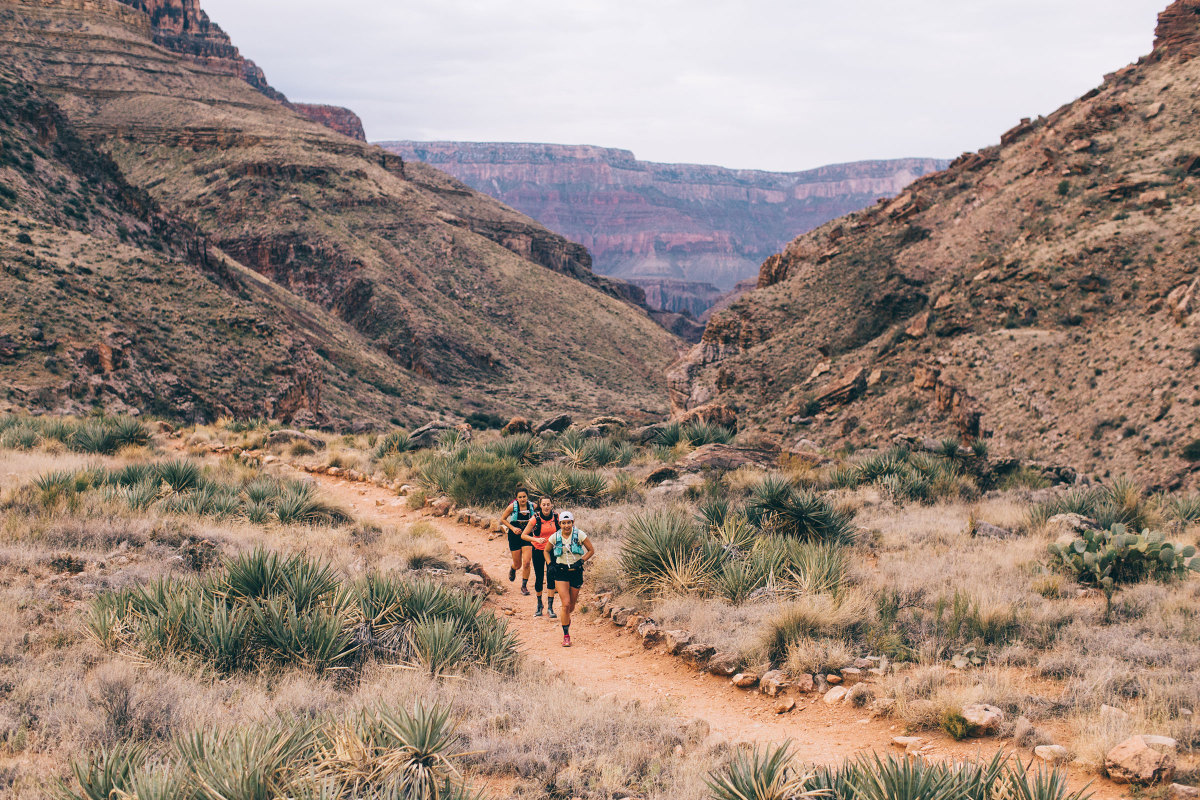
For a little background, all five of us are experienced distance runners. My four friends all raced in college and now run ultra marathons with relative frequency. Not that either of those is a necessity—I, in fact, don’t do either.
To prepare we committed to months of training, ramping up mileage and climbing the biggest hills we could find. Even when it snowed we kept running in the gym, joking about who could suffer through the most treadmill miles.
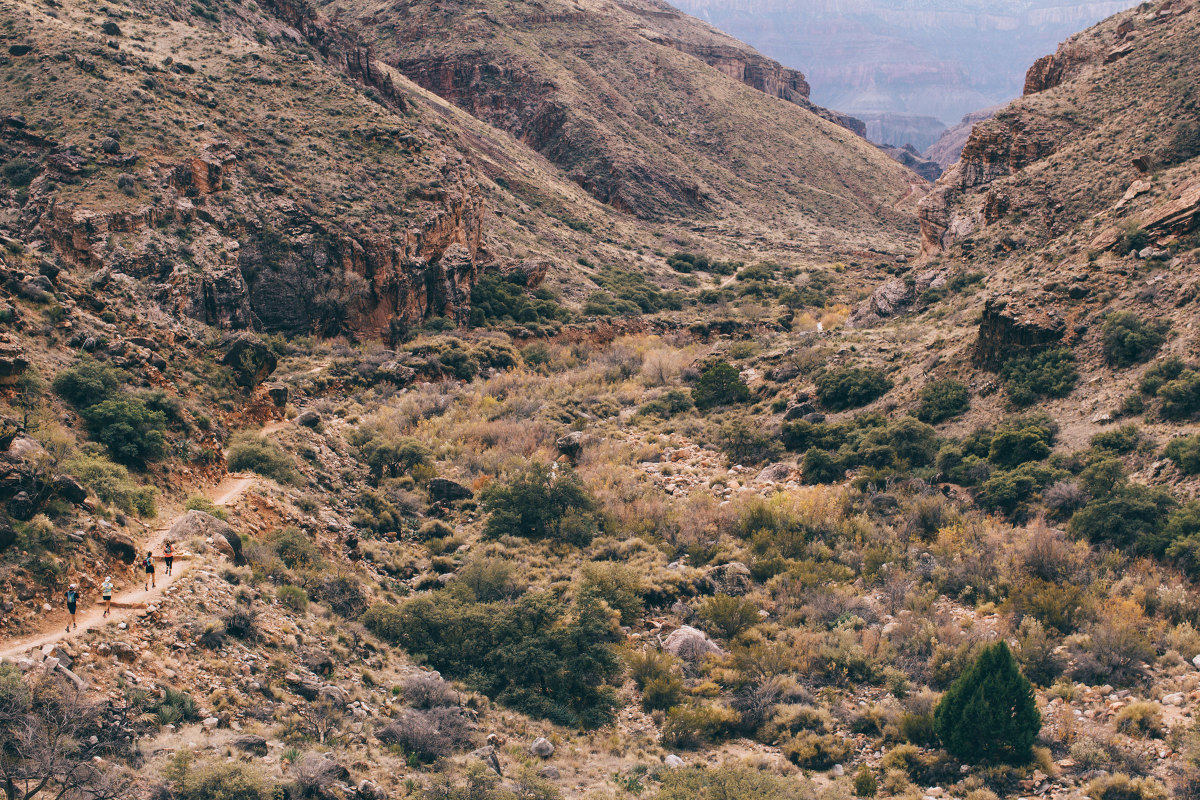
Running R2R2R is different than most heinous distances. (That is … it’s worse.) Quad-burning descents, steep, unremitting climbs and no outside support make it a beast of its own. Beyond the first tourist-clogged mile, the trails are mostly empty, other than a couple dozen hikers and the occasional mule train.
This is especially true in winter, when access to the North Rim is closed due to snow. During one stretch we didn’t see another person for nearly 20 miles.
If you’re still reading this, I’m going to assume that you may be considering making a rash decision, and trying to the run R2R2R yourself. (Tip of the hat to you.) But, before you buy a plane ticket to Phoenix and lace up your sneakers, please read this guide carefully.
Start Early
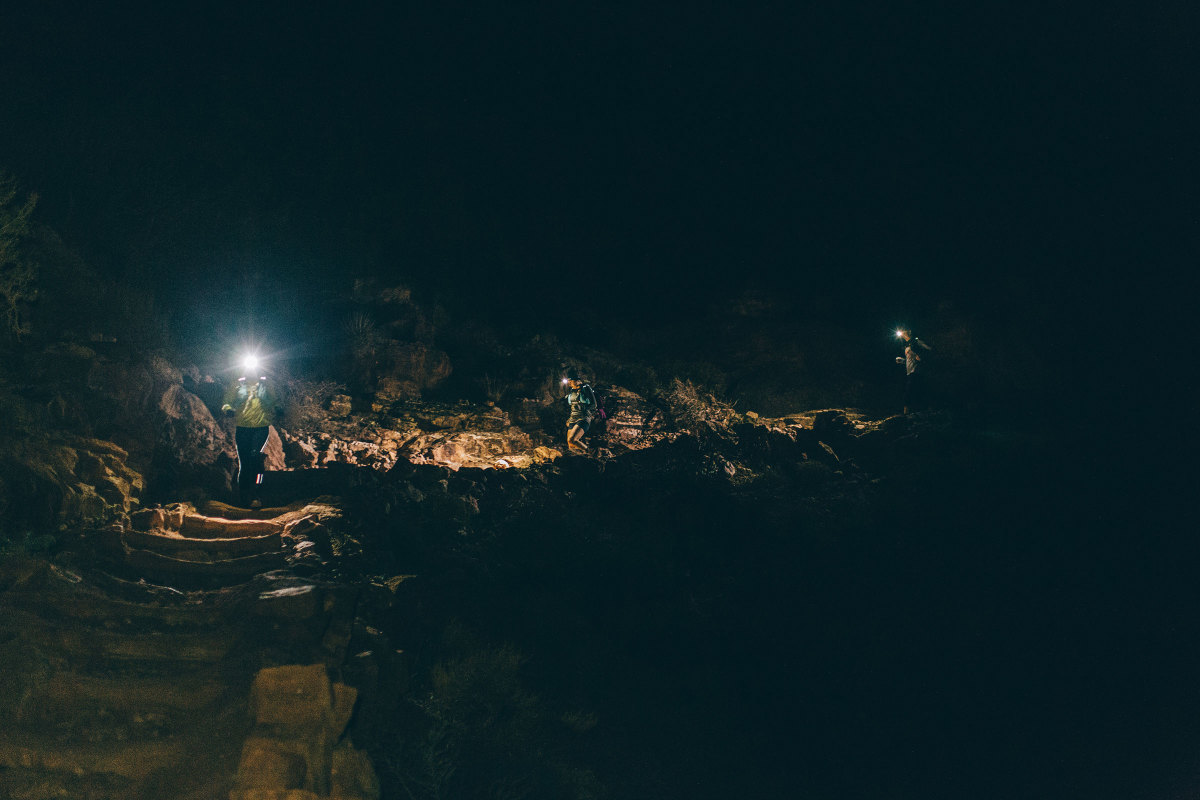
The first mule trains leave the South Rim around 5 a.m. These trains take a while to get around. For that reason alone, it’s best to start as early as possible.
Also, unless you are blessed with the legs of a superhero, this run will take more than 12 hours (likely much more). So, if you want to finish in the light (Spoiler Alert: You most certainly do), then my advice is to start early. In the summer, starting early helps avoid the heat at the bottom, which often eclipses 100 degrees Fahrenheit.
Start Slow
You’re going to be really excited at the beginning. Bottle it. In less than 8 miles the trail drops 5,000 feet to the river. I know, I know, running downhill is really fun. But running the next 42 miles with aching quads will not be. If you temper this enthusiasm and keep the pace modest, you’ll be happier in the long run.
Check the Weather
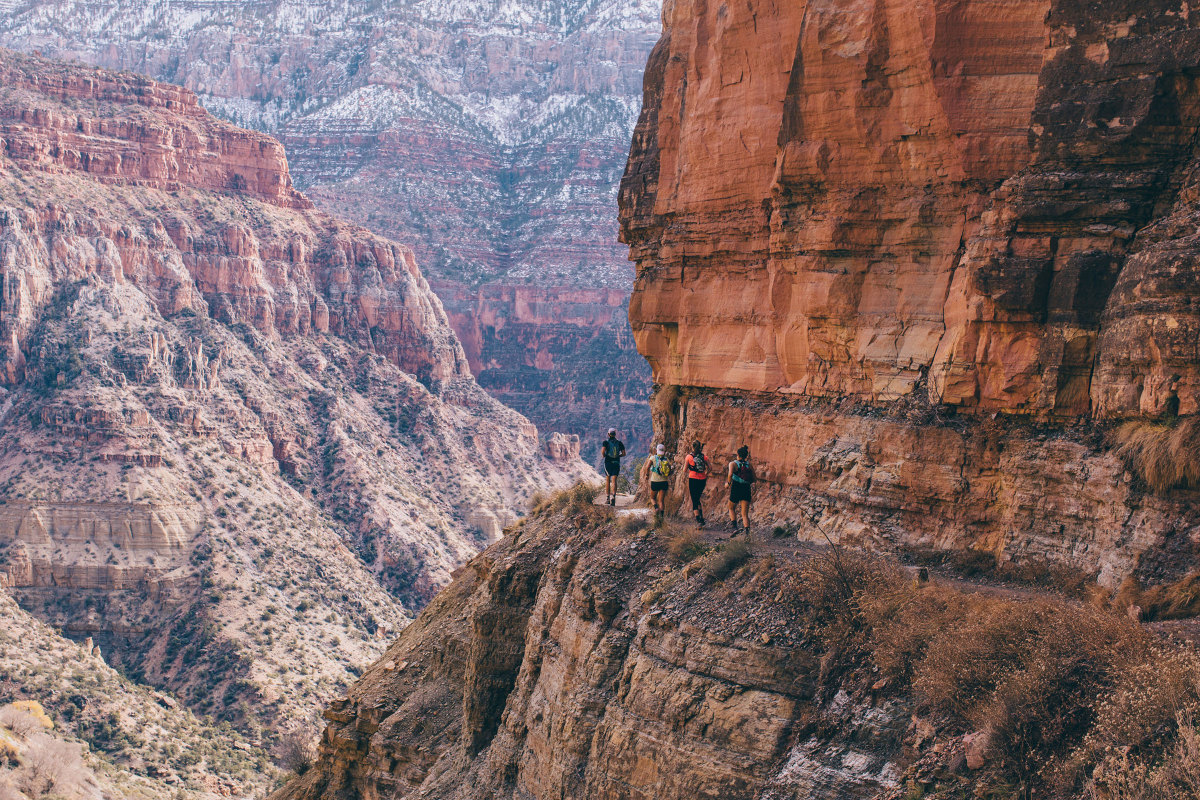
This sounds obvious, but there is one caveat: elevation. Both rims are above 7,000 feet (the North Rim is almost 8,000 feet). When we started on the South Rim, the temperature was in the mid 20s, with snow and ice on the ground. On the North Rim there were 4 miles of snow.
On the flip side, the bottom of the canyon is often 25-plus degrees warmer than the rims. Even on a cloudy, December day, we ran in mid 60s temps for several hours.
Snack Every Hour
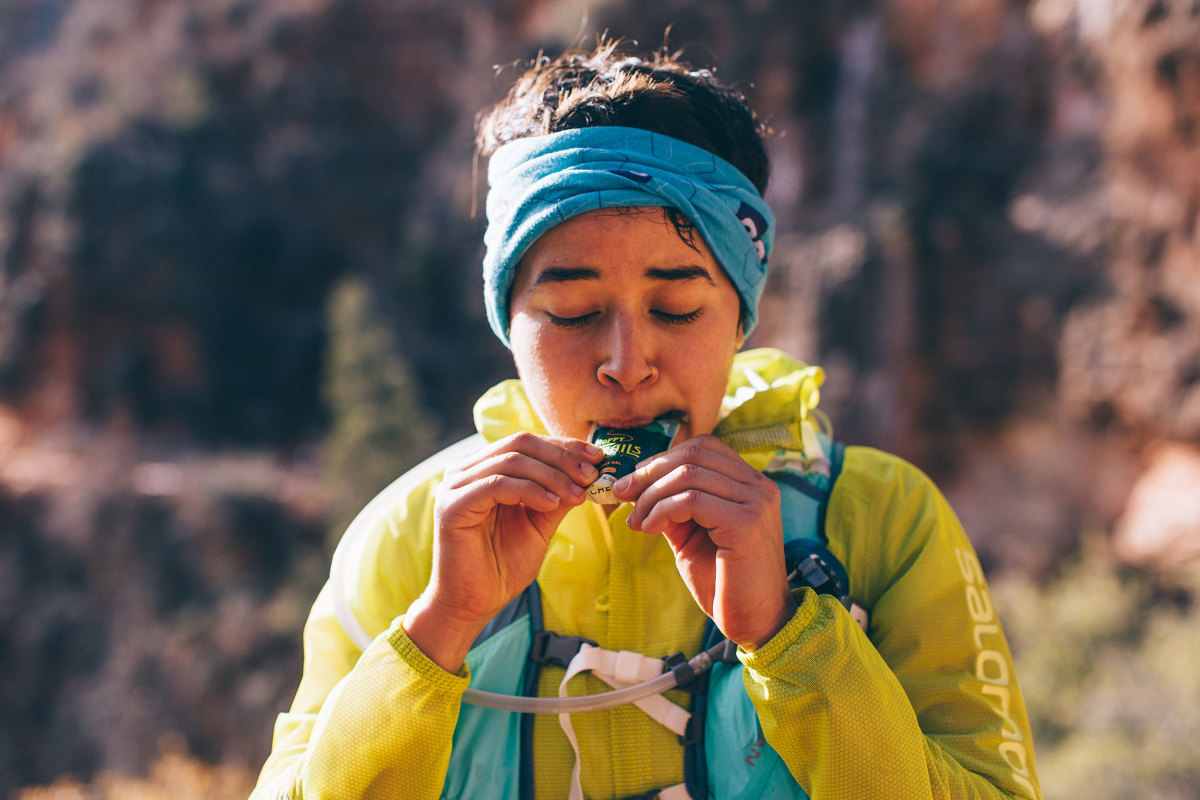
Or even more frequently, if you feel hungry. We tried to do a lot of our snacks while walking, to keep us moving forward. This is easy with gels and blocks, and less-so with sandwiches. We estimated that we burned over 6,000 calories during our run and were only able to consume around 2,500.
Snacks should be pretty basic: sugary stuff to keep a steady level of energy. Complex foods are good for recovery, but take energy to digest, making them less ideal to eat during the run.
Plan Water Refills
During the winter, the park closes off many of the faucets to prevent pipes freezing. They publish real-time updates that we found to be quite accurate. Because there was only one tap running on the 29-mile stretch from Phantom Ranch to the North Rim and back, we opted to bring a second water bladder for this long journey. It meant a little more weight, but well worth it to stay hydrated. I drank around 7 liters in total.
The Right Gear Makes All the Difference
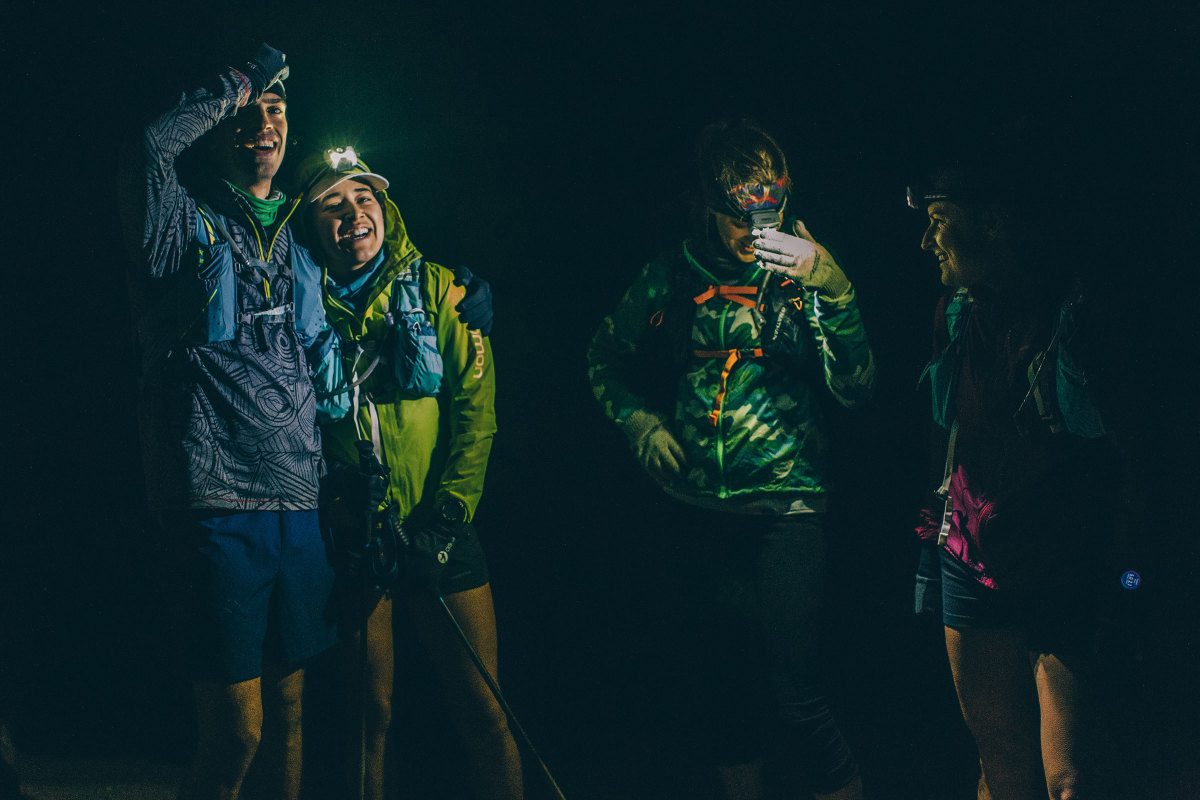
Your legs will still hurt and your body will still be exhausted, but having the proper equipment will help you mitigate blisters, bonking, chafing, and long-term soreness.
Use a well-cushioned shoe like the HOKA One One Speedgoat 2. Employ a mix of snacks with carbs, electrolytes, and amino acids like GU Stroopwafels, tabs, and gels. And lube your thighs and under arms with Squirrel’s Nut Butter … You’ll thank me later.
Train for the Elevation
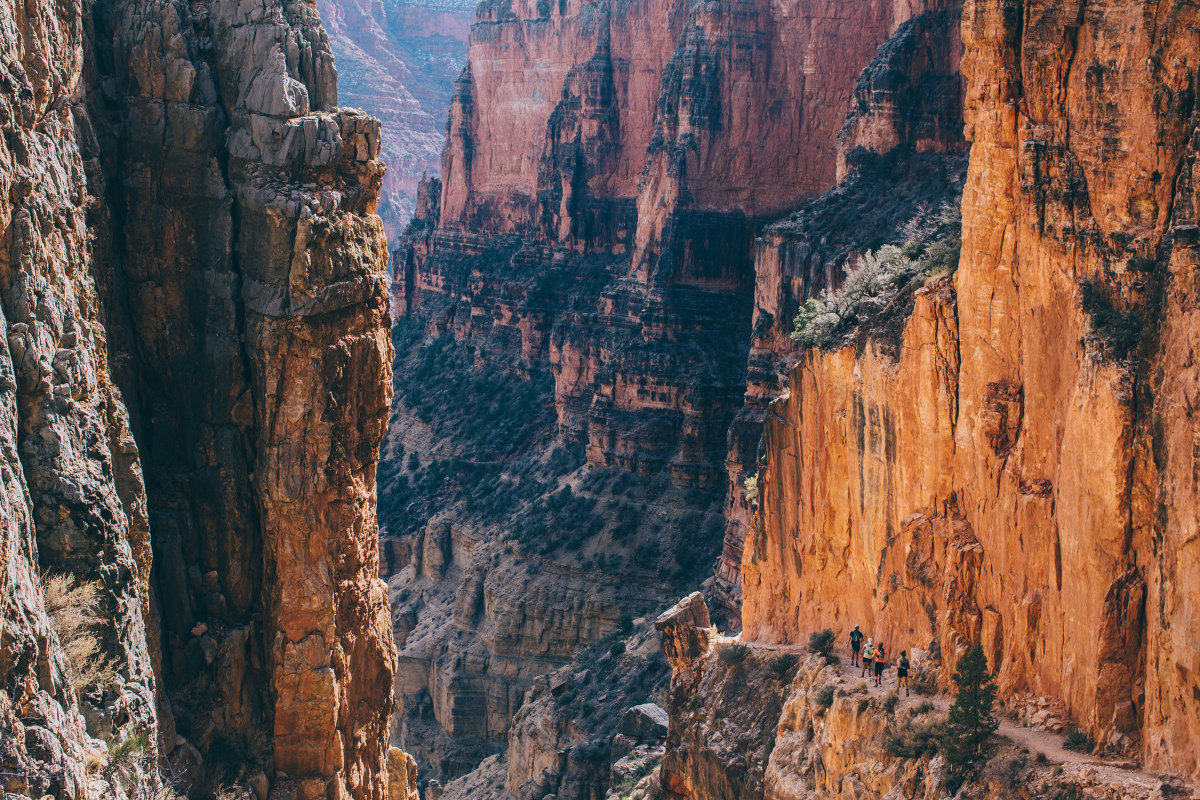
Focus on hill repeats as much as anything else, and don’t be afraid to skip a run to go to the weight room. Not only is there a huge amount of up/down, but it also comes at a vicious pace. Rolling hills are one thing, climbing steadily up 5,500 feet is another.
Leg strength and muscle fatigue played a bigger role than cardio for us.
Emotional Altitude Is Inversely Correlated With Actual Altitude
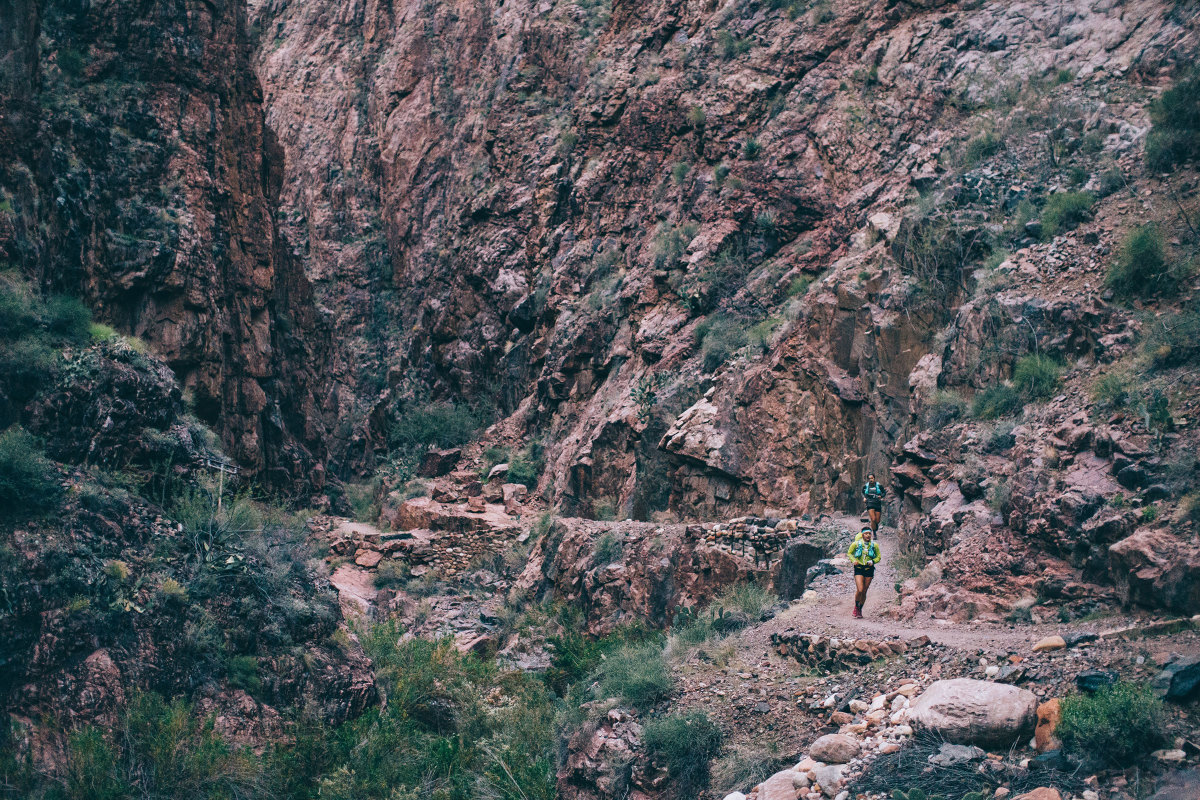
Everyone on this trip lives at sea level, in the Bay Area. All of us also work full-time. Thus, a Friday afternoon flight to Arizona and early morning Saturday start left almost no time for acclimatization.
Most of the effects were felt halfway through our run, as we approached the North Rim. Trust in your crew to get you through the lows.
Check the Shuttle Times
A winter R2R2R adds a few miles to the run, because parking is limited. We left our car at the visitor center and jogged two miles to the South Kaibab Trailhead.
On the return trip we ran up the Bright Angel Trail, because it is about a mile longer and slightly more gradual grade. To get back to our car, we had to catch a shuttle bus. Unlike us, make sure you check the shuttle times before you finish your run.
All Photos By Andy Cochrane.

More Stories
Discover Exciting Health Food Secrets
Transform Meals with Fresh Health Food
Must-Try Health Food for Everyday Wellness